Electric Transformers: The Unsung Heroes of Modern Power Distribution?
Have you ever wondered how electricity reaches your home safely and efficiently? The answer lies in a device that works tirelessly behind the scenes: the electric transformer.
Electric transformers are crucial components in power distribution systems. They change voltage levels, enabling efficient long-distance transmission and safe local distribution. Without these unsung heroes, our modern electrical grid wouldn’t function.
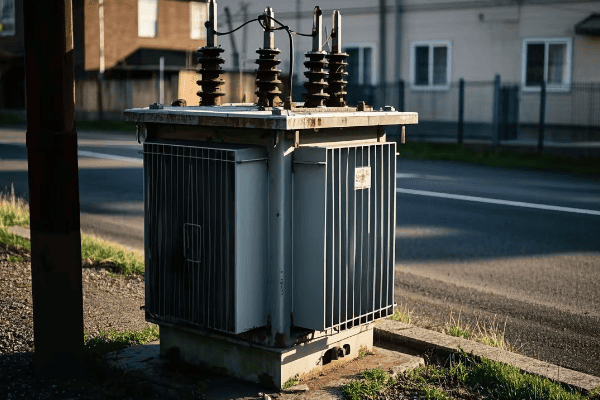
As an electrical engineer with years of experience in the power industry, I’ve seen firsthand how vital these devices are. Let’s explore the world of electric transformers and discover why they’re so important for our modern life.
The Vital Role of Electric Transformers: Keeping the Lights On in Our Modern World?
Imagine trying to pour water from a fire hose into a drinking glass. That’s similar to the challenge of getting electricity from power plants to your home. Transformers are the solution to this problem.
Electric transformers play a vital role in power distribution by changing voltage levels at key points. They enable efficient long-distance transmission and safe local distribution, ensuring a steady and reliable power supply to homes, businesses, and industries.
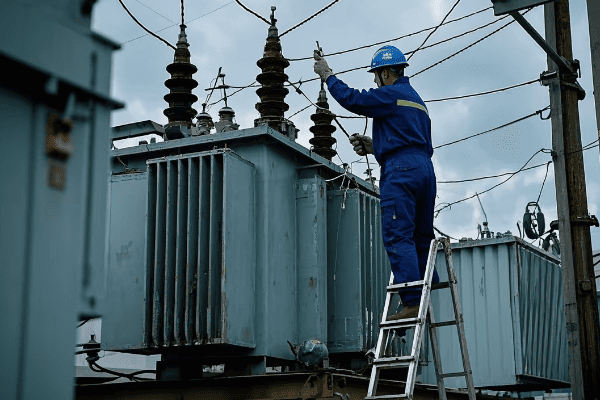
Let’s break down the crucial functions of electric transformers:
1. Voltage Transformation
Transformers change voltage levels to suit different needs:
- Step-Up Transformers: At power plants, they increase voltage for long-distance transmission.
- Step-Down Transformers: At substations, they reduce voltage for local distribution.
- Distribution Transformers: In neighborhoods, they further reduce voltage for safe home use.
2. Enabling Efficient Transmission
High voltage transmission, made possible by transformers, is key to efficiency:
- Higher voltage means lower current for the same power.
- Lower current results in reduced power losses during transmission.
- This allows electricity to travel long distances with minimal energy loss.
3. Ensuring Safety
Transformers play a crucial role in electrical safety:
- They isolate different parts of the power system.
- They reduce high transmission voltages to safe levels for end-users.
- They help protect against electrical faults and overloads.
4. Load Management
Transformers help manage varying power demands:
- They can adjust output voltage to maintain stable power supply under different load conditions.
- Some advanced transformers can even redirect power flow to balance loads across the grid.
Here’s a table summarizing the roles of different transformer types:
| Transformer Type | Location | Primary Function | Voltage Change |
|---|---|---|---|
| Step-Up | Power Plants | Prepare for transmission | 20kV to 345kV+ |
| Step-Down | Substations | Prepare for distribution | 345kV+ to 69kV or less |
| Distribution | Neighborhoods | Prepare for home use | 4-34.5kV to 120/240V |
In my years working with power systems, I’ve seen how crucial these functions are. I remember a time when a faulty transformer caused a widespread blackout. It was a stark reminder of how much we rely on these devices. The incident led to improved maintenance protocols and backup systems, further highlighting the vital role of transformers in our power infrastructure.
Electric transformers are truly the unsung heroes of our power distribution system. They work silently and continuously, ensuring that we have safe and reliable electricity whenever we need it. As we continue to rely more heavily on electricity in our daily lives, the importance of these devices only grows.
From Past to Present: The Evolution of Electric Transformers in Power Distribution?
When I first started in this field, transformers were simpler. Now, they’re evolving rapidly to meet new challenges. It’s like watching a technological evolution in fast-forward.
Electric transformers have evolved significantly since their invention. From basic voltage conversion devices, they’ve become sophisticated, efficient, and smart components of modern power grids. This evolution has enabled the expansion and increased reliability of our electrical infrastructure.
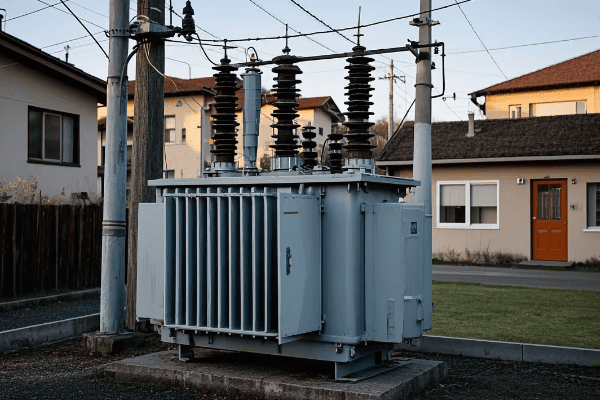
Let’s trace the journey of electric transformers through time:
1. Early Days: The Birth of Transformers
- 1831: Michael Faraday discovers electromagnetic induction, laying the groundwork for transformers.
- 1885: William Stanley designs the first practical transformer for alternating current systems.
- Early 1900s: Transformers enable the widespread adoption of AC power distribution.
2. Mid-20th Century: Improvements in Efficiency and Reliability
- 1920s-1950s: Introduction of better core materials like silicon steel.
- 1960s: Development of more efficient cooling systems.
- 1970s: Introduction of gas-insulated transformers for compact substations.
3. Late 20th Century: Addressing Environmental Concerns
- 1980s: Phase-out of PCB-containing transformer oils due to environmental concerns.
- 1990s: Development of vegetable-based transformer oils as eco-friendly alternatives.
4. 21st Century: The Digital Revolution
- 2000s: Integration of digital monitoring systems for real-time transformer health assessment.
- 2010s: Development of smart transformers with advanced control and communication capabilities.
- Present: Exploration of solid-state transformers for even greater control and efficiency.
Here’s a comparison of transformer features across time:
| Era | Core Material | Cooling Method | Monitoring | Efficiency |
|---|---|---|---|---|
| Early 1900s | Iron | Air/Oil | Manual gauges | ~90% |
| Mid-1900s | Silicon Steel | Forced Oil | Basic sensors | ~95% |
| Late 1900s | Grain-Oriented Steel | Oil/Synthetic Fluid | Electronic monitors | ~98% |
| Present | Amorphous Metal/Advanced Alloys | Advanced Oil/Dry Type | Smart systems | 99%+ |
This evolution has brought significant benefits:
- Improved Efficiency: Modern transformers are much more efficient, reducing energy losses.
- Enhanced Reliability: Advanced monitoring systems help prevent failures and extend transformer life.
- Environmental Benefits: New materials and designs reduce environmental impact.
- Grid Flexibility: Smart transformers enable better integration of renewable energy sources.
I remember when we first started using digital monitoring systems. It was a game-changer. We could detect potential issues before they became major problems, significantly reducing downtime. This technology has since become standard, and it’s exciting to think about what the future holds.
The evolution of electric transformers mirrors the evolution of our power grid. As our energy needs have grown and changed, transformers have adapted to meet these challenges. They’ve become more than just voltage conversion devices; they’re now intelligent components of a complex and dynamic power distribution system.
Guardians of Power Quality: How Electric Transformers Ensure Reliable Electricity Supply?
In my years working with power systems, I’ve learned that delivering electricity isn’t just about quantity – quality matters too. Transformers play a crucial role in maintaining this quality.
Electric transformers are guardians of power quality in our electrical grid. They help maintain stable voltage levels, reduce harmonics, and protect against power surges. This ensures that the electricity reaching our homes and businesses is clean, stable, and reliable.
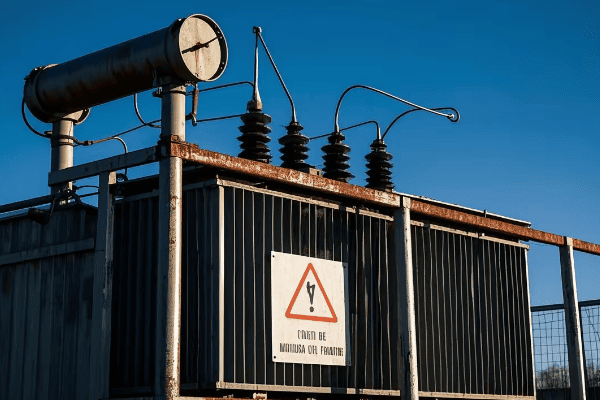
Let’s explore how transformers protect power quality:
1. Voltage Regulation
Transformers help maintain consistent voltage levels:
- On-Load Tap Changers (OLTC): These devices allow transformers to adjust voltage ratios while energized.
- Voltage Regulators: Special transformers designed specifically for voltage control.
2. Harmonic Mitigation
Harmonics are distortions in the power waveform that can cause problems:
- K-Factor Transformers: Designed to handle higher levels of harmonics without overheating.
- Phase-Shifting Transformers: Can cancel out certain harmonics by shifting phase angles.
3. Surge Protection
Transformers help protect against power surges:
- Impedance: The inherent impedance of transformers helps limit fault currents.
- Surge Arresters: Often installed with transformers to divert surge currents.
4. Power Factor Correction
While not their primary function, some specialized transformers can help with power factor correction:
- Scott-T Transformers: Convert three-phase power to two-phase, helping balance loads.
- Zig-Zag Transformers: Can be used for grounding and harmonic mitigation.
Here’s a table summarizing these power quality functions:
| Function | How Transformers Help | Benefit |
|---|---|---|
| Voltage Regulation | OLTCs, Voltage Regulators | Stable voltage for equipment |
| Harmonic Mitigation | K-Factor, Phase-Shifting | Reduced distortion, less equipment stress |
| Surge Protection | Impedance, Surge Arresters | Equipment protection, improved reliability |
| Power Factor Correction | Specialized Transformers | Improved efficiency, reduced costs |
I once worked on a project where a factory was experiencing frequent equipment failures. We discovered that harmonics from their large motor drives were the culprit. By installing K-Factor transformers and implementing a harmonic mitigation strategy, we solved the problem. The factory saw a significant reduction in downtime and maintenance costs.
Transformers do more than just change voltage levels. They’re active guardians of power quality, working silently to ensure that the electricity we use is clean and reliable. This role becomes even more critical as we integrate more sensitive electronic equipment and intermittent renewable energy sources into our grid.
Efficiency Masters: Electric Transformers’ Contribution to Energy Conservation?
When I first started in this field, efficiency wasn’t always the top priority. Now, it’s a crucial consideration in every aspect of power distribution, and transformers are at the forefront of this efficiency drive.
Electric transformers play a vital role in energy conservation. Through advanced designs and materials, modern transformers minimize energy losses, enabling more efficient power transmission and distribution. This efficiency translates to significant energy savings across the entire power grid.
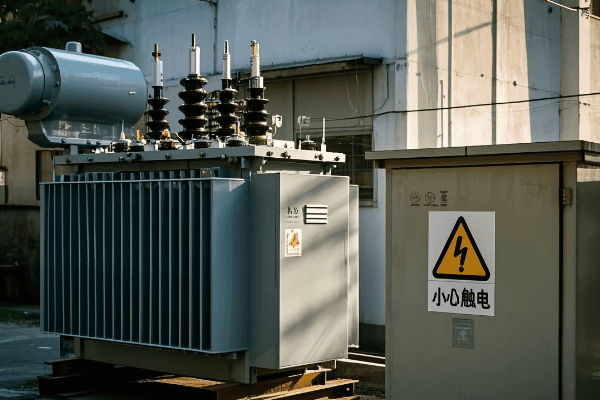
Let’s explore how transformers contribute to energy conservation:
1. Reducing Core Losses
Core losses occur even when the transformer is energized but not supplying load:
- Advanced Core Materials: Use of grain-oriented silicon steel or amorphous metal cores.
- Core Design: Techniques like step-lap core joint design reduce losses.
2. Minimizing Copper Losses
Copper losses occur due to resistance in the transformer windings:
- Larger Conductors: Using larger cross-section conductors reduces resistance.
- Advanced Winding Techniques: Methods like continuous disc windings can reduce eddy currents.
3. Improved Cooling Systems
Efficient cooling helps reduce losses and extend transformer life:
- Oil Types: Use of high-performance transformer oils or natural ester fluids.
- Cooling Designs: Advanced radiator designs and forced cooling systems.
4. Load Management
Efficient transformers are designed to handle varying loads:
- Multiple Smaller Units: Using multiple smaller transformers instead of one large one can improve efficiency under varying loads.
- Smart Load Management: Advanced transformers can adjust their operation based on load conditions.
Here’s a comparison of efficiency improvements in transformers:
| Aspect | Traditional Design | Modern Efficient Design | Improvement |
|---|---|---|---|
| Core Loss | ~0.5% of rated power | ~0.1% of rated power | 80% reduction |
| Copper Loss | ~1% of rated power | ~0.5% of rated power | 50% reduction |
| Cooling System | Basic oil circulation | Advanced oil or ester fluids | 20-30% better heat dissipation |
| Load Management | Fixed design | Adaptive operation | Varies, up to 20% improvement |
The impact of these efficiency improvements is significant:
- Energy Savings: Even a small improvement in efficiency can lead to large energy savings given the number of transformers in use.
- Cost Reduction: Lower losses mean less wasted energy, reducing operational costs.
- Environmental Impact: Improved efficiency leads to reduced carbon emissions from power generation.
- Extended Lifespan: More efficient operation often translates to longer transformer life.
I remember working on a project to upgrade a city’s distribution transformers. By replacing old units with modern, high-efficiency models, we achieved energy savings equivalent to powering several thousand homes. It was a powerful demonstration of how seemingly small improvements in transformer efficiency can have a big impact.
Transformers are often overlooked in discussions about energy conservation, but they play a crucial role. As we continue to seek ways to reduce our energy consumption and environmental impact, the efficiency of these devices becomes increasingly important. The evolution of transformer technology is not just about maintaining power quality – it’s about creating a more sustainable energy future.
The Future of Power Distribution: Innovations in Electric Transformer Technology?
When I first entered this field, the idea of "smart" transformers seemed like science fiction. Now, it’s becoming reality, and it’s revolutionizing how we think about power distribution.
The future of electric transformer technology is smart, efficient, and flexible. Innovations like solid-state transformers, AI-driven maintenance, and integration with renewable energy systems are set to transform power distribution. These advancements promise improved reliability, efficiency, and grid resilience.

Let’s explore some of the exciting innovations in transformer technology:
1. Solid-State Transformers (SSTs)
SSTs use power electronics to convert power, offering several advantages:
- Improved Power Quality: Can actively correct power factor and harmonics.
- Size and Weight Reduction: Potentially much smaller and lighter than traditional transformers.
- DC Capability: Can easily integrate AC and DC systems, important for renewable energy and electric vehicle charging.
2. AI and Machine Learning Integration
Artificial Intelligence is enhancing transformer operation and maintenance:
- Predictive Maintenance: AI algorithms can predict potential failures before they occur.
- Dynamic Load Management: ML models can optimize transformer operation based on predicted load patterns.
- Fault Diagnosis: AI can quickly identify the cause of faults, speeding up repairs.
3. Advanced Materials
New materials are pushing the boundaries of transformer performance:
- High-Temperature Superconductors: Could dramatically reduce losses and size.
- Nanomaterials: Nanostructured core materials could offer even lower losses than amorphous metals.
- Bio-based Insulating Fluids: More environmentally friendly alternatives to mineral oil.
4. Integration with Renewable Energy
Transformers are evolving to better support renewable energy integration:
- Bi-directional Power Flow: Handling power flow from distributed generation sources.
- Energy Storage Integration: Some concepts combine transformers with energy storage capabilities.
- Microgrid Support: Specialized transformers for microgrid applications.
Here’s a comparison of traditional transformers with future innovations:
| Aspect | Traditional Transformer | Future Transformer |
|---|---|---|
| Power Conversion | Electromagnetic | Solid-State Electronics |
| Intelligence | Passive Device | Active with AI Integration |
| Size/Weight | Large and Heavy | Potentially Much Smaller |
| Flexibility | Fixed Design | Adaptable to Various Needs |
| Renewable Integration | Limited Capability | Designed for Bi-directional Flow |
The potential impact of these innovations is enormous:
- Improved Grid Resilience: Smart transformers can quickly adapt to changing conditions, improving overall grid stability.
- Enhanced Energy Efficiency: New technologies could significantly reduce energy losses in power distribution.
- Better Renewable Integration: Advanced transformers will facilitate the growth of renewable energy sources.
- Reduced Maintenance Costs: Predictive maintenance and self-diagnosing capabilities can lower operational costs.
- New Grid Capabilities: Innovations like SSTs could enable new functionalities in our power grids.
I recently visited a research lab working on solid-state transformers. The prototype was a fraction of the size of a traditional transformer but could do so much more. It could actively balance loads, correct power quality issues, and seamlessly switch between AC and DC. It was a glimpse into the future of power distribution.
These innovations in transformer technology are not just incremental improvements – they represent a paradigm shift in how we think about power distribution. As we move towards a more distributed, renewable-based energy system, these advanced transformers will be key enablers of the smart, flexible grid of the future.
Conclusion
Electric transformers are indeed the unsung heroes of modern power distribution. From ensuring reliable supply to driving energy efficiency and enabling future innovations, they play a crucial role in powering our world. As we move towards a smarter, greener grid, transformers will continue to evolve, shaping the future of energy distribution.
Free CHBEB Transformer Catalog Download
Get the full range of CHBEB transformers in one catalog.
Includes oil-immersed, dry-type, pad-mounted, and custom solutions.
Quick Message
Request A free quote
We'd like to work with you
- +86 15558785111
- [email protected]
- +86 15558785111
What We Do
CHINA BEI ER BIAN (CHBEB) GROUP, with 218 million in registered capital, originated from Beijing Beierbian Transformer Group. Headquartered in Beijing for R&D, it operates major production bases in Nanjing and Yueqing, producing high-quality products.
Latest Product
address
BeiJing
No 3,RongJing East Road,BeiJing Economic Technological Development Area,BeiJing,China
JiangSu
No 7️Xiangfeng Road,Jiangning,NanJing,JiangSu,China
WenZhou
No.211, Wei 16 Road, Industrial Zone, Yueqing, Wenzhou, Zhejiang, China.
XiangYang Industrial Zone ,YueQing,WenZhou,ZheJiang,China
contact us
- [email protected]
- +86 13057780111
- +86 13057780111
- +86 15558785111
Copyright © Bei Er Bian Group


